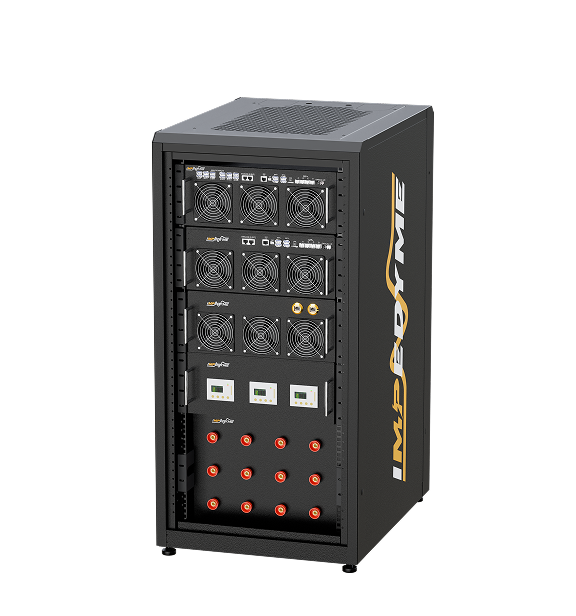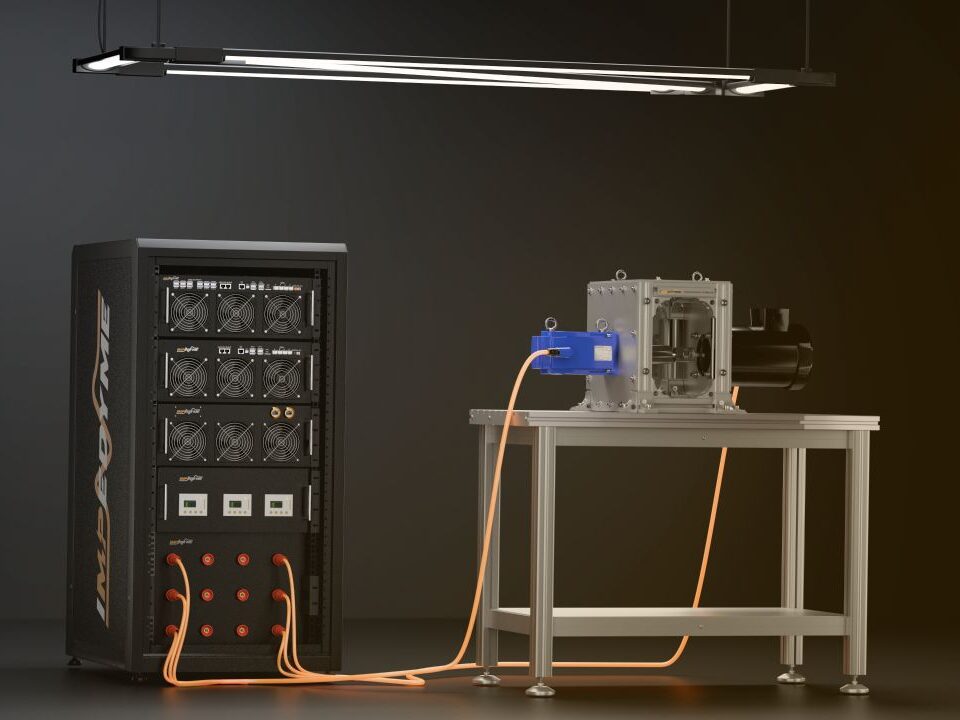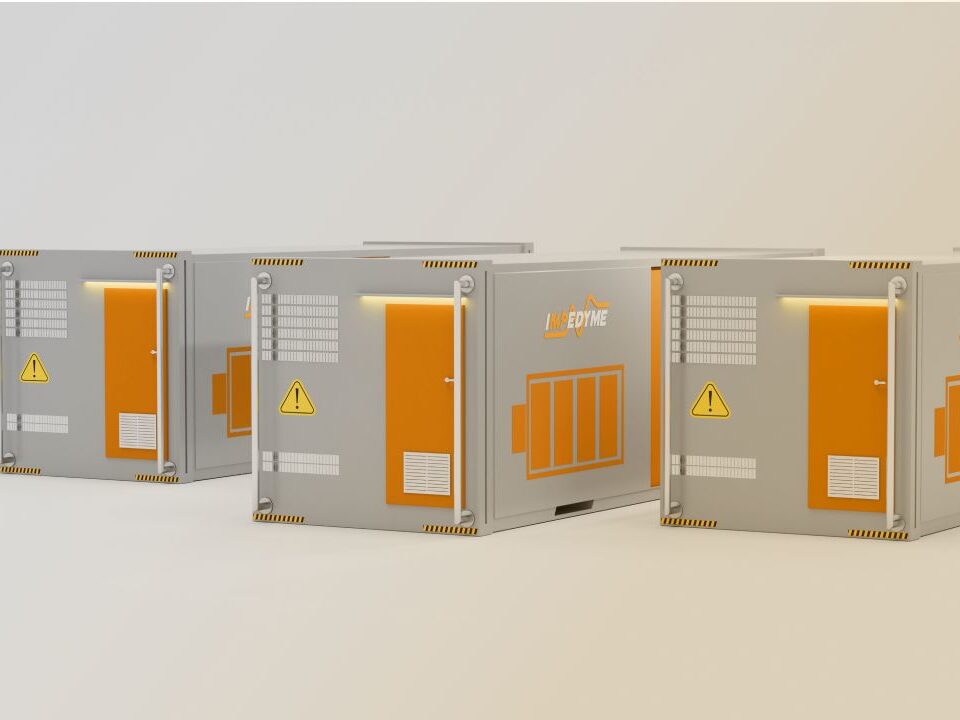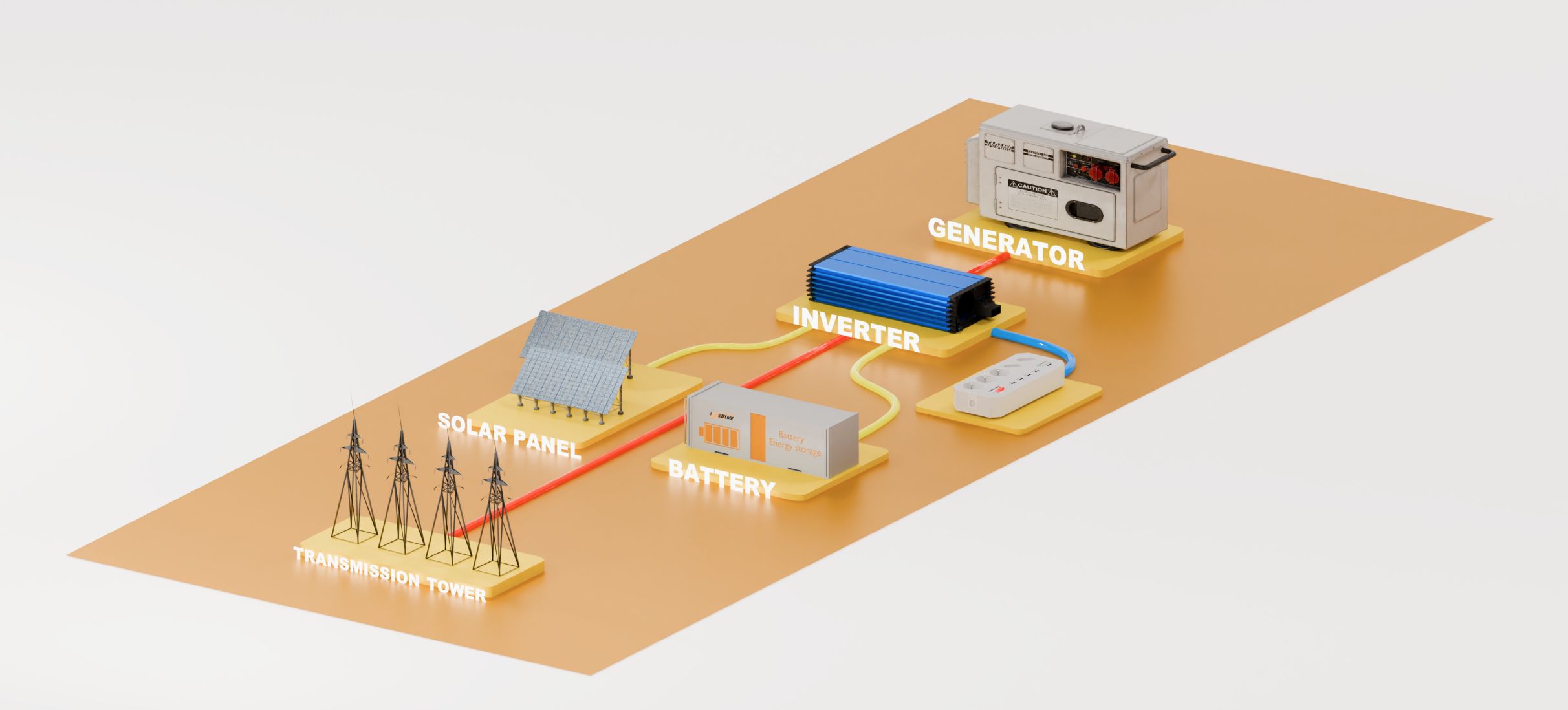
-
 Induction Motor
Induction Motor
-
 Automotive Electrical System Simulation
Automotive Electrical System Simulation
-
 DC/DC Bidirectional Converter
DC/DC Bidirectional Converter
-
 PWM Control for Brushless DC
PWM Control for Brushless DC
-
 BLDC Motor Control and Drive Simulation
BLDC Motor Control and Drive Simulation
-
 Electric Vehicle Fast Charger Simulation
Electric Vehicle Fast Charger Simulation
-
 DFIG Wind Turbine Simulation
DFIG Wind Turbine Simulation
-
 Dual Active Bridge
Dual Active Bridge
-
 EV Dynamometer Test Environment Simulation
EV Dynamometer Test Environment Simulation
-
 Electric Vehicle Simulation
Electric Vehicle Simulation
-
 Three-Phase Grid-Connected Inverter Using Direct-Q…
Three-Phase Grid-Connected Inverter Using Direct-Q…
-
 Three-Phase Grid-Connected Solar Photovoltaic
Three-Phase Grid-Connected Solar Photovoltaic
-
 Grid-Connected Rectifier
Grid-Connected Rectifier
-
 Grid-Tied Inverter System
Grid-Tied Inverter System
-
 Torque Control in a Hybrid Excitation Synchronous …
Torque Control in a Hybrid Excitation Synchronous …
-
 Wye-Delta Starting Circuit
Wye-Delta Starting Circuit
-
 IPMSM-Based Axle-Drive
IPMSM-Based Axle-Drive
-
 Simplified Parallel Hybrid Electric Vehicle
Simplified Parallel Hybrid Electric Vehicle
-
 Simplified Series Hybrid Electric Vehicle
Simplified Series Hybrid Electric Vehicle
-
 Series-Parallel Hybrid Electric Vehicle
Series-Parallel Hybrid Electric Vehicle
-
 Three-Phase Matrix Converter Simulation
Three-Phase Matrix Converter Simulation
-
 Venturini Modulation for Three-Phase Matrix Conver…
Venturini Modulation for Three-Phase Matrix Conver…
-
 Microgrid Frequency Regulation Using Vehicle-to-Gr…
Microgrid Frequency Regulation Using Vehicle-to-Gr…
-
 Three-Phase Modular Multilevel Converter
Three-Phase Modular Multilevel Converter
-
 Field-Oriented Control
Field-Oriented Control
-
 Interior Permanent Magnet Synchronous Generator
Interior Permanent Magnet Synchronous Generator
-
 Permanent Magnet Synchronous Machine
Permanent Magnet Synchronous Machine
-
 PMSM Rotor Angular Velocity
PMSM Rotor Angular Velocity
-
 PMSM-Based Electrical Traction Drive
PMSM-Based Electrical Traction Drive
-
 Maximum Power Point Tracking
Maximum Power Point Tracking
-
 Six-Phase Permanent Magnet Synchronous Machine
Six-Phase Permanent Magnet Synchronous Machine
-
 Synchronous Machine-Based Electrical Drive Simulat…
Synchronous Machine-Based Electrical Drive Simulat…
-
 Single-Stage Solar Inverter
Single-Stage Solar Inverter
-
 Three-Phase Cycloconverter Simulation
Three-Phase Cycloconverter Simulation
-
 Totem-Pole PFC Simulation
Totem-Pole PFC Simulation
-
 Twelve-Pulse Thyristor Rectifier
Twelve-Pulse Thyristor Rectifier
-
 Two-Wheeler On-Board Charger
Two-Wheeler On-Board Charger
-
 Vienna Rectifier Simulation
Vienna Rectifier Simulation
-
 High-Voltage Direct Current
High-Voltage Direct Current
-
 Wireless Power Transfer
Wireless Power Transfer
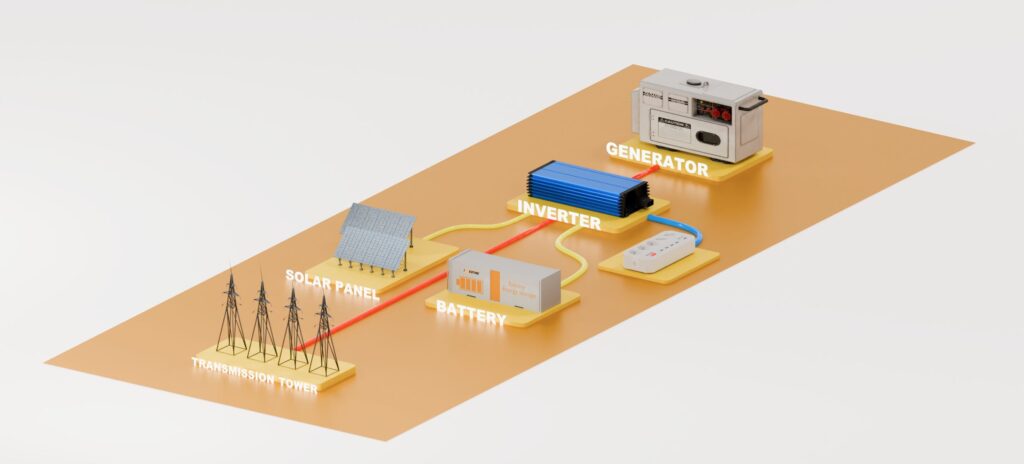
Comprehensive Documentation for Simulation of a Three-Phase Grid-Connected Inverter Using Direct-Quadrature (DQ) Control
Table of Contents
- 1 Comprehensive Documentation for Simulation of a Three-Phase Grid-Connected Inverter Using Direct-Quadrature (DQ) Control
- 1.1 Introduction
- 1.2 System Overview
- 1.2.1 What is a Grid-Connected Inverter with DQ Control?
- 1.2.2 Purpose of the Simulation
- 1.3 Key Features
- 1.3.1 DQ Synchronous Reference Frame Control
- 1.3.2 Sinusoidal Pulse Width Modulation (SPWM)
- 1.3.3 Phase-Locked Loop (PLL) for Grid Synchronization
- 1.3.4 Simplified Control Design
- 1.3.5 Grid Compatibility
- 1.3.6 Dynamic Performance
- 1.4 Simulation Objectives
- 1.5 Technical Description
- 1.5.1 System Configuration
- 1.5.2 Control Methodology
- 1.6 Advantages of DQ-Based Grid-Connected Inverter Control
- 1.7 Applications
- 1.7.1 Renewable Energy Systems
- 1.7.2 Energy Storage Systems (ESS)
- 1.7.3 Microgrids
- 1.7.4 Electric Vehicle (EV) Charging Infrastructure
- 1.7.5 Industrial Power Systems
- 1.7.6 Power Quality Improvement
- 1.7.7 Aerospace and Defense
- 1.7.8 Smart Grids
- 1.8 Simulation Benefits
- 1.9 Summary
- 1.10 Future Enhancements
Introduction
This project focuses on the modeling and simulation of a three-phase grid-connected inverter using Direct-Quadrature (DQ) Synchronous Reference Frame Control. The system employs Sinusoidal Pulse Width Modulation (SPWM) for switching an IGBT-based inverter bridge, ensuring efficient and stable power injection into the grid. By implementing DQ control strategies, this simulation provides a robust framework for analyzing grid synchronization, power quality, and system stability.

System Overview
What is a Grid-Connected Inverter with DQ Control?
A grid-connected inverter converts DC power (from a renewable energy source or energy storage system) into AC power that is synchronized with the electrical grid. The Direct-Quadrature (DQ) Control method simplifies the control of active and reactive power by transforming three-phase AC variables into a rotating reference frame.
Purpose of the Simulation
The simulation aims to:
- Validate the performance of the grid-connected inverter under various grid conditions.
- Analyze the effectiveness of DQ-based current control for active/reactive power regulation.
- Evaluate power quality metrics such as Total Harmonic Distortion (THD) and power factor correction.
Key Features
DQ Synchronous Reference Frame Control
The system transforms three-phase AC signals into DC-equivalent DQ components, allowing precise control of grid-injected power.
➡️ HIL/PHIL Benefit: Enables real-time control validation and grid fault simulations.
Sinusoidal Pulse Width Modulation (SPWM)
SPWM is used for smooth inverter switching, reducing harmonic distortion and improving efficiency.
➡️ HIL/PHIL Benefit: Allows testing of different modulation strategies under real-time conditions.
Phase-Locked Loop (PLL) for Grid Synchronization
A PLL ensures phase and frequency synchronization between the inverter and the grid.
➡️ HIL/PHIL Benefit: Enables robust testing of grid synchronization algorithms under grid disturbances.
Simplified Control Design
The transformation of AC quantities into DC quantities simplifies the control design and implementation.
Grid Compatibility
DQ control ensures compliance with grid codes and standards for voltage, frequency, and power factor.
Dynamic Performance
DQ control provides fast and accurate response to grid disturbances, enhancing system reliability.
Simulation Objectives
This simulation helps evaluate:
- Grid-synchronization performance using PLL techniques.
- Active and reactive power control capabilities using DQ control.
- Power quality improvements with SPWM-based inverter switching.
➡️ HIL/PHIL Benefit: Facilitates hardware-in-the-loop testing before grid integration.
Technical Description
System Configuration
- Input: DC power source (e.g., renewable energy, battery storage).
- Output: Three-phase AC power injected into the grid.
- Power Stage: IGBT-based three-phase inverter with LC filter.
Control Methodology
- DQ Transformation: Converts AC voltages and currents into DQ reference frame.
- Current Control Loop: Regulates active (d-axis) and reactive (q-axis) current components.
- Phase-Locked Loop (PLL): Ensures accurate grid synchronization.
➡️ HIL/PHIL Benefit: Enables real-time validation of inverter control strategies.
Advantages of DQ-Based Grid-Connected Inverter Control
- Precise Power Regulation: Independent control of active and reactive power.
- Improved Power Quality: Reduces harmonics and enhances grid stability.
- Fast Dynamic Response: Adapts quickly to grid disturbances and load variations.
➡️ HIL/PHIL Benefit: Provides a realistic testing platform for grid compliance verification.
Applications
Renewable Energy Systems
Solar Power Plants: Grid-connected inverters with DQ control are used in photovoltaic (PV) systems to convert DC power from solar panels into AC power for the grid. Simulations help optimize power injection and ensure compliance with grid codes.
Wind Turbines: DQ-controlled inverters are used in wind energy systems to manage power flow between the generator and the grid. Simulations ensure stable operation under varying wind conditions.
Hybrid Energy Systems: DQ control is used in hybrid systems combining solar, wind, and battery storage to ensure efficient power conversion and grid integration.
Energy Storage Systems (ESS)
Battery Energy Storage: Grid-connected inverters with DQ control are used in battery energy storage systems to manage charging and discharging. Simulations optimize power flow and ensure grid stability.
Grid Support: DQ-controlled inverters provide grid services such as frequency regulation, voltage support, and peak shaving. Simulations validate their performance under dynamic grid conditions.
Microgrids
Islanded Microgrids: DQ-controlled inverters are used in islanded microgrids to regulate voltage and frequency, ensuring stable operation without grid connection.
Grid-Connected Microgrids: Simulations help optimize the performance of DQ-controlled inverters in grid-connected microgrids, enabling seamless transition between grid-connected and islanded modes.
Electric Vehicle (EV) Charging Infrastructure
Bidirectional Chargers: DQ-controlled inverters are used in bidirectional EV chargers for Vehicle-to-Grid (V2G) applications. Simulations validate power flow control and grid interaction.
Fast Charging Stations: DQ control ensures efficient power conversion and grid compatibility in fast charging stations. Simulations optimize performance under varying load conditions.
Industrial Power Systems
Motor Drives: DQ-controlled inverters are used in industrial motor drives for precise speed and torque control. Simulations optimize performance and energy efficiency.
Uninterruptible Power Supplies (UPS): DQ control ensures stable power supply in UPS systems. Simulations validate performance during grid disturbances and outages.
Power Quality Improvement
Active Power Filters (APF): DQ-controlled inverters are used in APFs to mitigate harmonics and improve power quality. Simulations validate harmonic compensation and grid stability.
Static Synchronous Compensators (STATCOM): DQ control is used in STATCOMs for reactive power compensation. Simulations ensure stable voltage regulation and grid support.
Aerospace and Defense
Aircraft Power Systems: DQ-controlled inverters are used in aircraft to manage power flow between generators, batteries, and onboard systems. Simulations ensure reliable operation under extreme conditions.
Military Power Systems: DQ control is used in military applications for efficient power conversion and grid integration. Simulations validate performance in harsh environments.
Smart Grids
Grid Integration of Distributed Energy Resources (DERs): DQ-controlled inverters enable efficient integration of DERs like solar, wind, and storage into the grid. Simulations validate grid compatibility and stability.
Demand Response: DQ control helps manage power flow in demand response systems. Simulations optimize load balancing and grid support.
Simulation Benefits
With this simulation, users can:
- Optimize inverter control strategies for grid compliance.
- Analyze real-time grid interaction and power injection performance.
- Evaluate harmonic content and power factor improvement.
➡️ HIL/PHIL Benefit: Ensures seamless transition from simulation to real-world deployment.
Summary
The Three-Phase Grid-Connected Inverter Simulation with DQ Control provides a robust framework for analyzing inverter performance in grid-connected applications. Impedyme’s HIL and PHIL solutions enhance the development process:
| Development Stage | Impedyme’s Contribution |
|---|---|
| Control Design | HIL for real-time algorithm validation |
| Grid Synchronization Testing | PHIL for real grid interaction scenarios |
| Power Quality Assessment | THD analysis with real-time control updates |
| Final Validation | Full-system PHIL under grid compliance conditions |
Future Enhancements
- Integration of AI-based adaptive control for grid stability.
- Advanced fault-tolerant control mechanisms for grid disturbances.
- Simulation of next-generation power electronics (SiC/GaN-based inverters).
The Three-Phase Grid-Connected Inverter Simulation with DQ Control provides a comprehensive environment for developing, testing, and validating grid-tied inverter systems. With Impedyme’s HIL/PHIL solutions, engineers can optimize efficiency, stability, and power quality, ensuring seamless grid integration of renewable energy sources.
